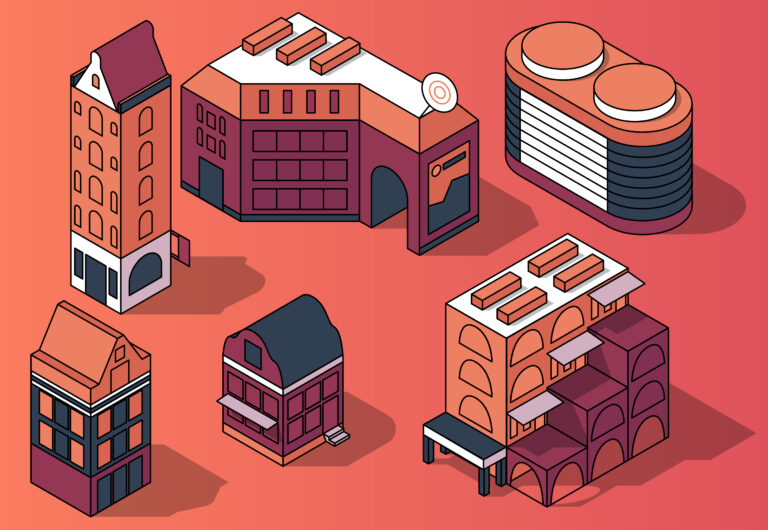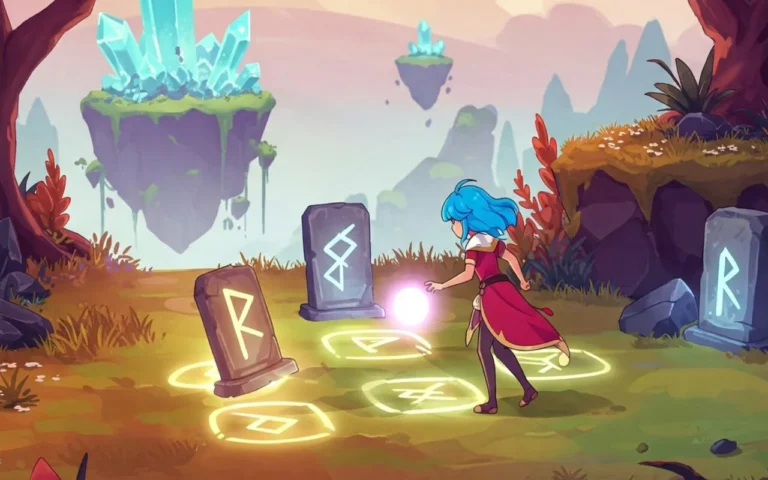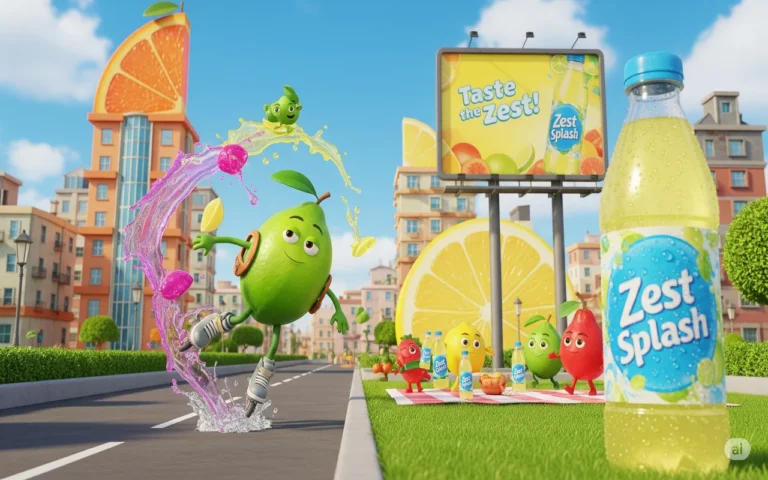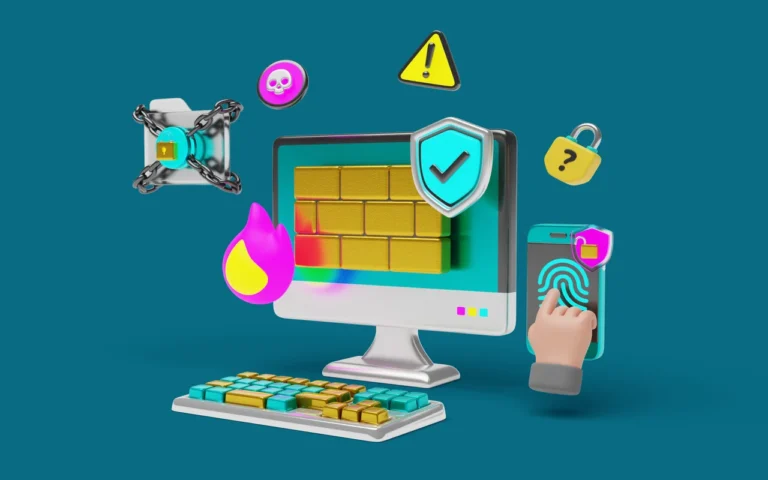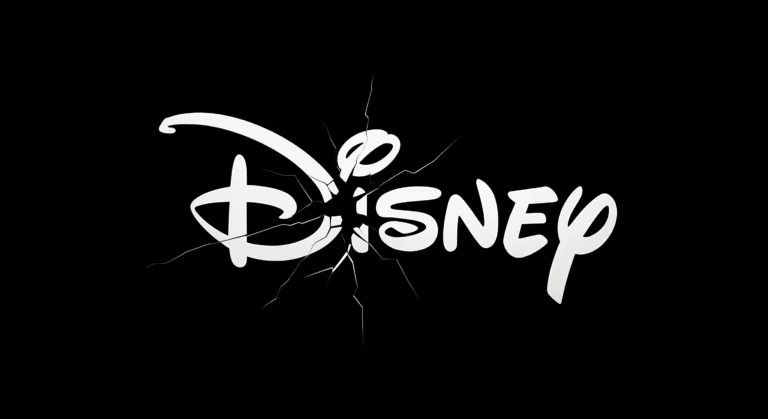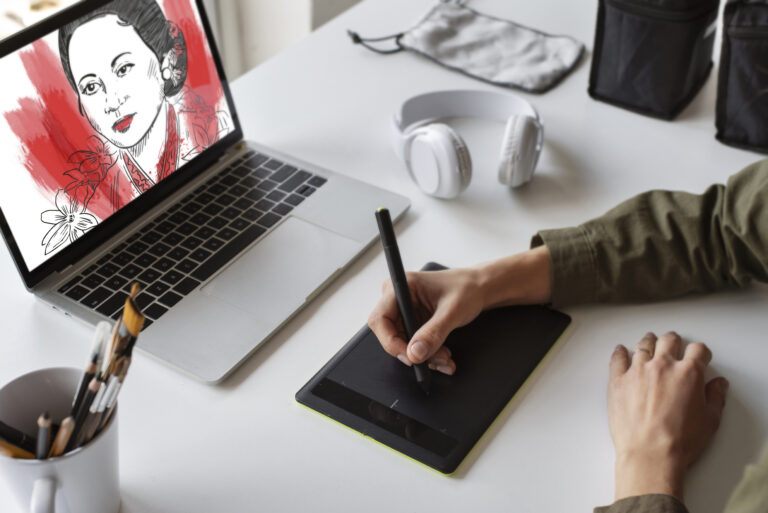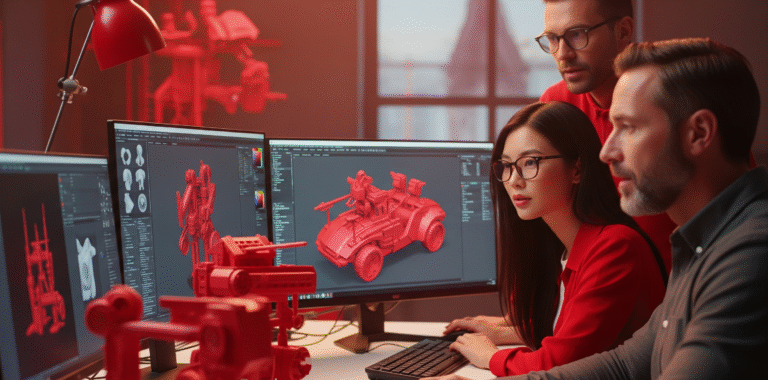Concept art is the foundation of visual storytelling in games, films, and animation, allowing every artist and animation studio to turn abstract ideas into comprehensive visuals that guide production teams toward a unified vision.
Whether crafting characters, immersive environments, or detailed props, concept art’s role ensures consistency and clarity, from initial sketches to final assets. Concept art sets the creative tone well before modeling or animation starts.
In this article, we will outline the step-by-step process of creating concept art and explore its themes, types, and importance in contemporary game development.
What is Concept Art?
Concept art is the initial visual exploration phase: During this phase, artists convert written concepts or project outlines into concrete illustrations.
This introductory stage acts as a foundational guide for the creation process and enables directors, game developers, and animators to assess proposals before sacrificing significant assets.
In contrast to completed pieces, concept art prioritizes repeated refinements and creative solutions, guaranteeing that the designs are practical, realistic, and in harmony with the overall mood of the project.
Concept art connects imaginative ideas with actual implementation, from basic doodles to refined images, rendering it essential in every entertainment workflow.
The following are some of the key aspects concept art covers:
- The style, appearance, and color palette of characters, creatures, objects, wardrobe, landscapes, and more.
- The color palette, lighting, and visual atmosphere of different 2D & 3D environment art services.
- The composition and camera angles for important scenes and sequences.
- The scale and proportions of structures, props, and other physical elements.
- The practical functionality of designed elements like technology, costumes, or vehicles.

Need Animation Services?
Visit our Animation Service page to see how we can help bring your ideas to life!
What Are the Steps in the Concept Art Process?
As with every other animation pipeline, concept art also comes in definitive and overlapping stages. Let’s review the critical steps to creating concept art:
Establish a Clear Vision
A successful piece of concept art begins with a well-defined purpose. The artist determines the goal: Is it a heroic character, a menacing landscape, or a cutting-edge weapon?
Clarity prevents wasted effort and ensures the design supports the story or gameplay.
For example, a character designed for harsh combat should appear nimble and lightweight. Setting a clear intention early aligns the team around a shared creative direction, paving the way toward further progress.
Collect Extensive Reference Materials
References anchor imaginative ideas in reality. Artists gather images, objects, films, and existing art to analyze forms, textures, and proportions.
This collection helps you create authentic, distinctive designs.
For instance, crafting a sci-fi spaceship might involve studying real-world aircraft, industrial equipment, or naval ships.
A robust reference library fuels creativity rather than constraining it!
The concept artist collects a wide range of photographic and artistic references related to all aspects of the subject matter, including:
- Architecture styles that match the time period or environment
- Landscape photos (if outdoor scenes are involved)
- Textures and patterns for surfaces like stone, wood, and fabric
- Props like furniture, technology, tools, etc.
- Flora and fauna for the natural environment concept art process
- Lighting references for the time of day and weather
- Fashion styles for clothing, hairstyles, and accessories
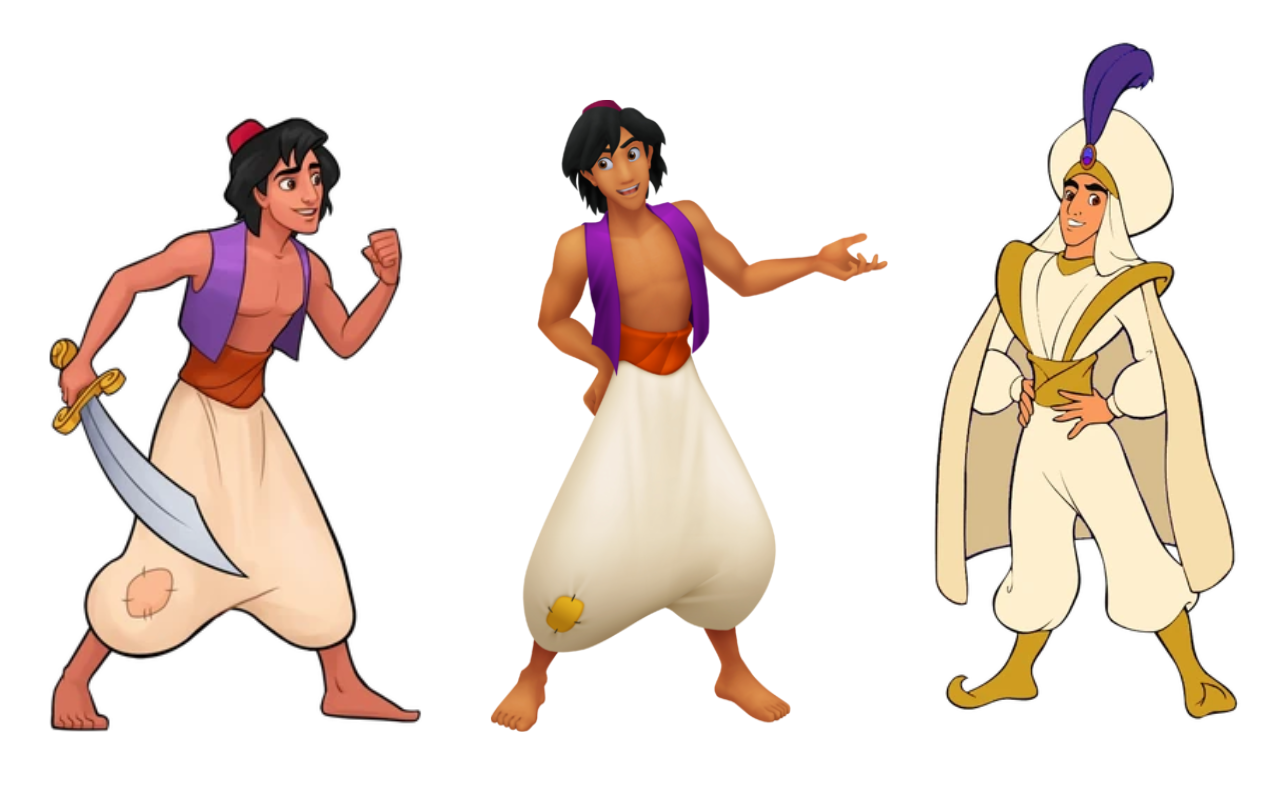
Create Numerous Thumbnail Sketches
Thumbnails are quick, small sketches that explore diverse ideas without focusing on details. By producing numerous thumbnails, artists can rapidly test shapes, silhouettes, and layouts.
This phase fosters experimentation and often leads to unexpected, serendipitous, and original designs.
Every professional game studio uses thumbnails to pinpoint the most promising direction before investing in further development.
The artist does quick, rough thumbnail sketches on paper or digitally to lay out many different options for:
- Character poses and silhouettes
- Compositional arrangements
- Camera angles and perspective
- General lighting, values, and color palette (Based on the color theory in art)
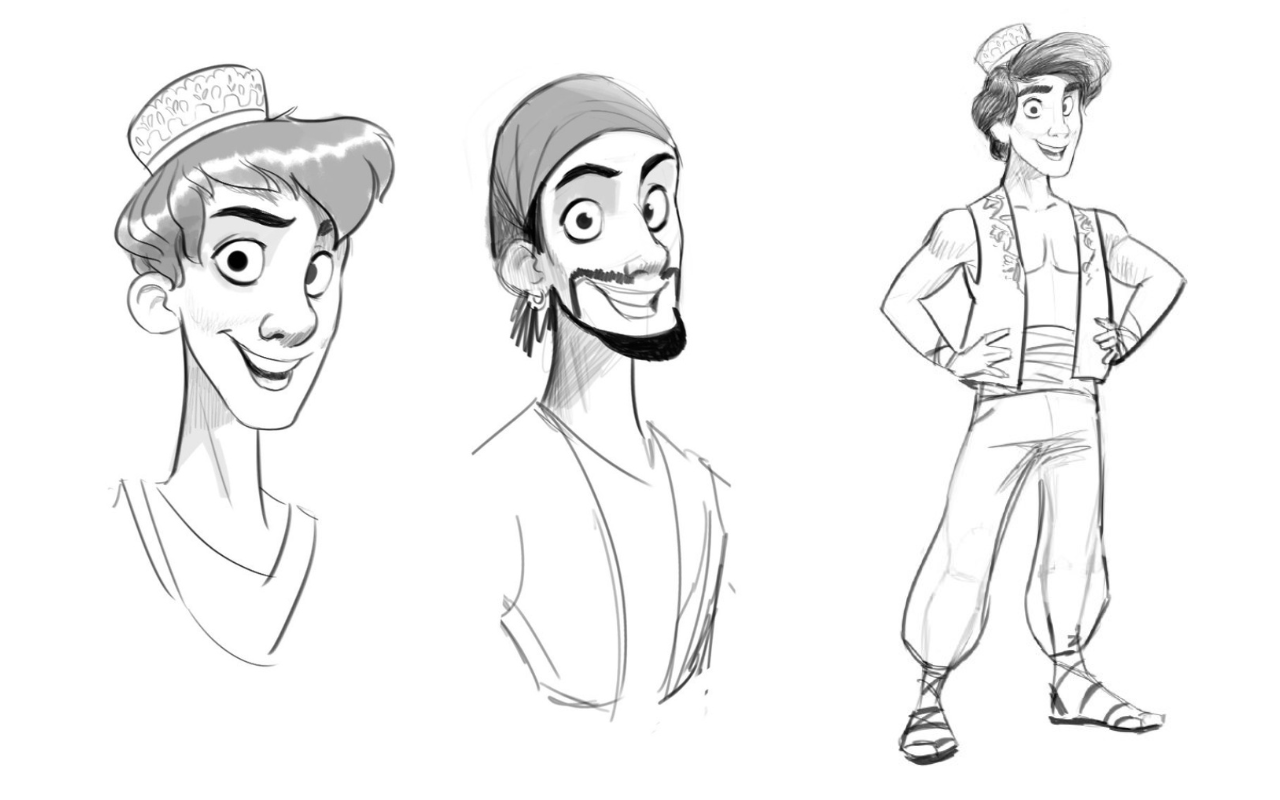
Refine into Detailed Rough Sketches
After selecting the best thumbnails, artists develop them into more precise rough sketches. These sketches clarify anatomy, perspective, and key design features.
While not final, they provide enough detail for feedback from art directors and teams. Rough sketches also help identify potential design issues early, saving time and resources in later stages.
Based on chosen ideas, the artist makes more detailed rough sketches, defining:
- Specific shapes, based on the shape language, forms, and proportions
- Perspective and depth
- Light and shadow shapes
- Details like facial features and human anatomy
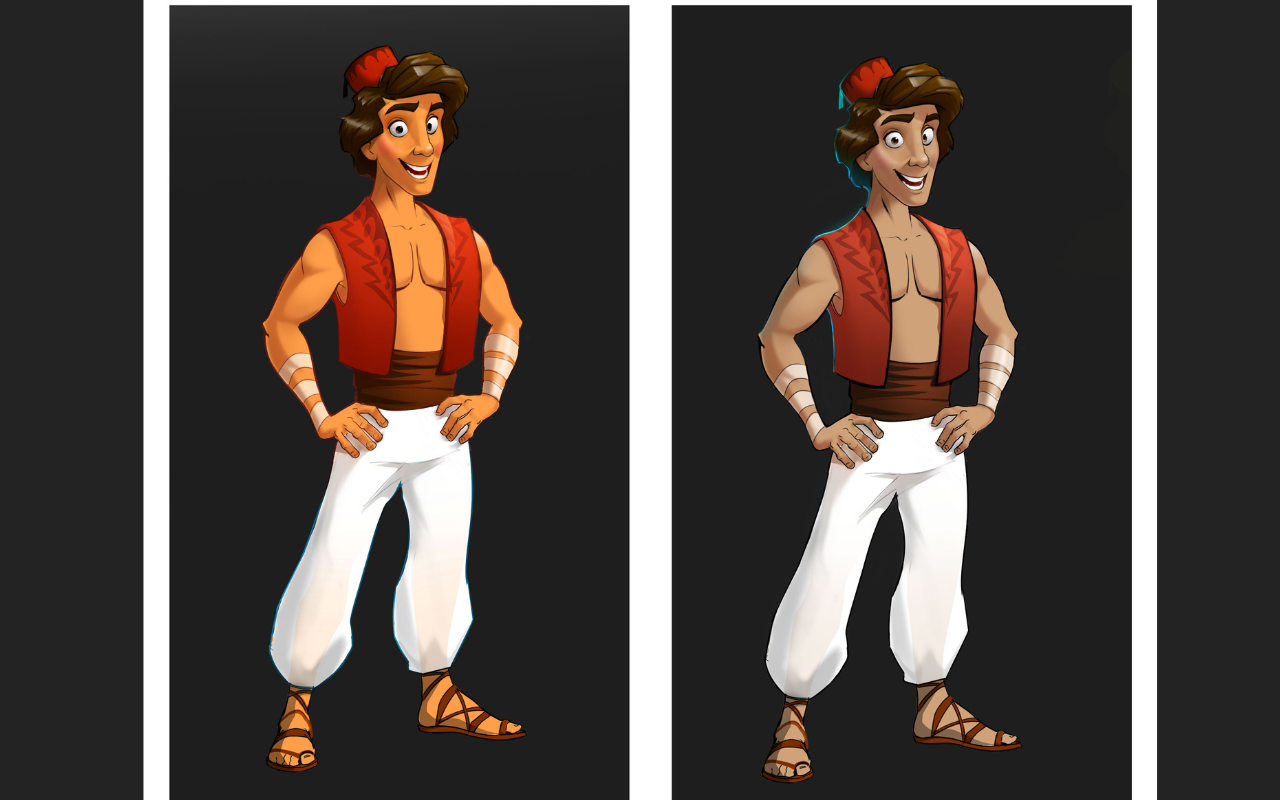
Create Monochromatic Value Art
Value studies prioritize light and shadow to shape form and atmosphere, using grayscale to eliminate color distractions.
This step ensures designs are clear and recognizable, even from afar. A strong value structure supports production by guiding 3D modelers and texture artists to maintain visual consistency.
The artist may take a sketch in grayscale or limited color to focus on:
- How lighting and shadows interact with forms
- Composition and Visual Hierarchy
- Accuracy of perspective and depths
- Drawing attention to focal points
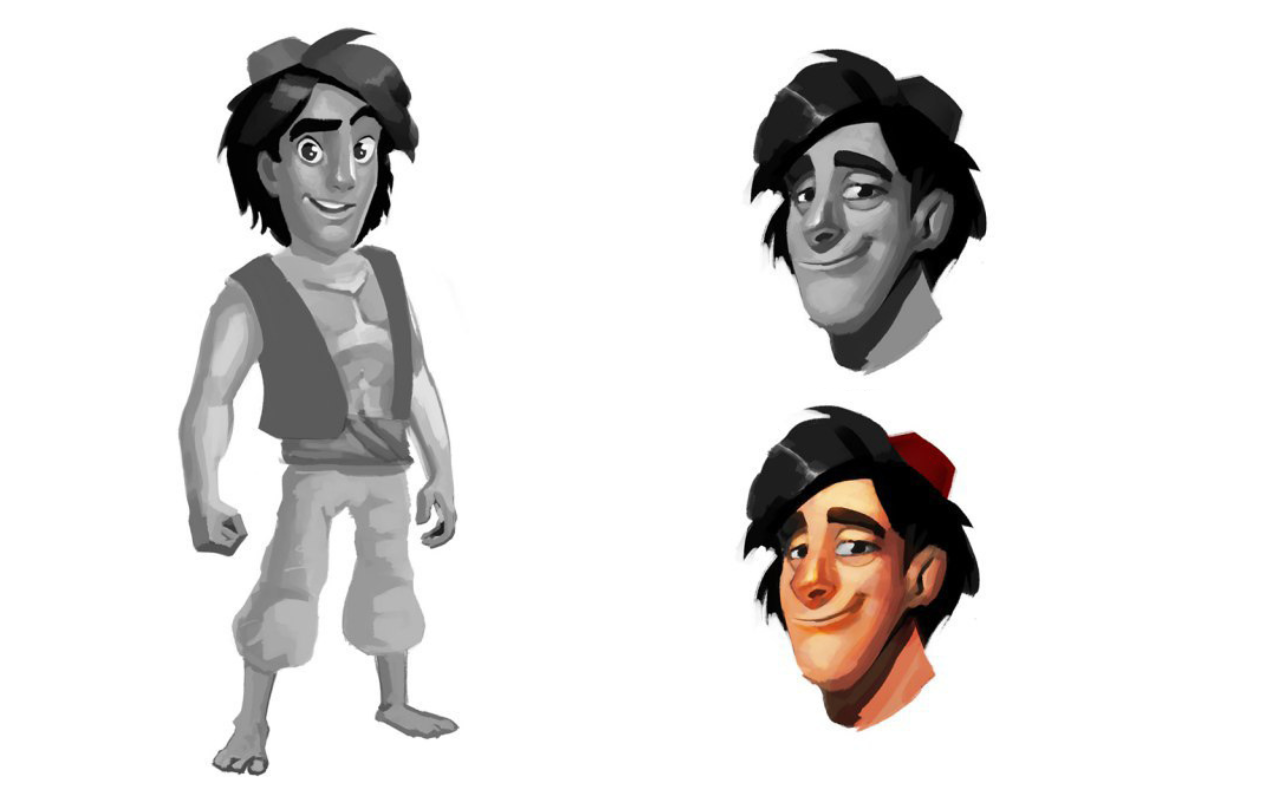
Finalize with Polished Painting and Details
The final stage involves adding vibrant colors, textures, and intricate details to bring the concept to life. This polished artwork highlights materials, lighting, and mood, making it ready for presentations, production guides, or marketing materials.
While refinement is key, the groundwork from earlier steps ensures the design remains unified and effective.
The artist takes their work into the final rendering by:
- Painting textures, surfaces, and lighting
- Adding color that enhances mood and atmosphere
- Incorporating graphic design embellishments
- Creating special effects if needed
- Refining all details and polishing the execution
What Themes and Styles Exist in Concept Art?
Concept art differs significantly based on a project’s tone and genre, spanning themes like fantasy, sci-fi, post-apocalyptic, historical, or stylized cartoon aesthetics.
Depending on the project, concept art can vary significantly in terms of themes, styles, and genres, and this is why the time estimations and price rates for concept art projects are different. Here are some of the most common:
- Science Fiction Concept Art
- Fantasy Concept Art
- Comic Book Concept Art
- Animation Concept Art
- Historical Concept Art
For instance, fantasy settings often incorporate intricate, organic designs, whereas sci-fi emphasizes streamlined, industrial shapes.
Familiarity with genre expectations allows artists to craft visuals that are both authentic and innovative. Consistent themes help audiences or players immediately grasp the world’s atmosphere and rules.
What Are the Different Types of Concept Art?
Let’s discover some of the concept art that a concept art outsourcing studio may provide:
Character Concept Art
Character art centers on creating heroes, villains, and NPCs that convey distinct personalities and roles. Elements like silhouette, attire, and posture are key to crafting memorable and functional character designs.
Environment Concept Art
Environment art constructs immersive settings, ranging from vast landscapes to detailed interiors. It shapes the mood, scale, and navigational hints that influence both gameplay and narrative.
Vehicle and Prop Concept Art
Props and vehicles enhance storytelling by grounding the world in believable functionality. From weapons to futuristic vehicles, prop artists must make sure that the elements seamlessly blend into the environment while feeling authentic.
Storyboarding Concept Art
Storyboards map out the narrative flow and camera perspectives, serving as a critical tool for animators and directors to experiment with pacing, composition, and emotional impact before production begins.
Matte Paintings Concept Art
Matte paintings create expansive backgrounds, often merging painted and photographic elements. They are widely used to craft cinematic vistas that enrich the visual scope of games and films.
Why Is Concept Art Important?
Concept art is a crucial early step in visual transmedia storytelling, significantly influencing yet minimizing creative risks by enabling teams to rapidly explore ideas, experiment with iterations, and spot issues before committing to expensive production.
Moreover, it aligns creative departments and offers a cohesive visual blueprint for 3D modeling, animation, and level design.
Beyond streamlining processes, concept art captivates stakeholders, vividly conveying a project’s potential in ways words cannot.
Without initial, strong concept art, productions may veer off track or lose creative coherence.
Who Are the Prominent Concept Art Artists?
Concept artists are professionals who combine creativity with technical expertise to visualize ideas before they are brought to life.
Their role requires mastery of anatomy, perspective, composition, and color theory, as well as a strong understanding of the technical and psychological aspects of storytelling.
The most well-known and influential concept artists:
Pioneers of Modern Concept Art
- Ralph McQuarrie: the concept artist behind the globally famous look of Star Wars, especially Darth Vader’s character and locations like Cloud City.
- Syd Mead: The “Visual futurist” who designed Blade Runner and Tron.
- Joe Johnston: Another Star Wars alum, known for vehicle and prop designs.
- Ilya Nazarov: The Lord of the Rings and Avatar films
- Jama Jurabaev: The HBO series Game of Thrones
- Kang Le: Disney, Moana, Frozen, Big Hero 6, and more
- John Park: Spider-Man movies and the classic Marvel hero
- Jamaal Bradley: Riot Games and League of Legends
- Wei Zheng: Epic Games on Fortnite
Contemporary Concept Art Leaders
- Craig Mullins: The father of digital painting, whose work spans films, games, and book covers.
- Feng Zhu: The founder of FZD School of Design, which trains future industry artists.
- Loish (Lois van Baarle): Expressive character design and a massive online community presence.
Final Words
Concept art turns imagination into a clear blueprint for production. Using references, sketches, value studies, and polished paintings, artists craft visuals that define entire worlds.
Concept art’s themes, styles, and significance span all aspects of game design and animation. Whether you’re a novice grasping the fundamentals or a seasoned artist refining your process, mastering concept art is crucial for creating captivating and authentic projects.
FAQs
How to make a concept art portfolio?
Select 10–20 polished pieces, show process steps like sketches, mood boards, include intros, and tailor work to your target industry.
How to make character concept art?
Start with mood boards, thumbnail sketches, refine silhouette, line art, multiple views, then color and render for volume.
How should I gather reference materials correctly?
Set clear goals, then collect visuals (textures, environments, lighting) that fit your project’s mood and guide your design.
Why use thumbnail sketches first?
Thumbnails let you explore ideas quickly and experiment with composition, lighting, and camera angles with minimal effort.
What comes after thumbnails?
Create tighter rough sketches to refine shapes, details, perspective, depth, and lighting before final rendering.
Why include monochromatic value studies?
They help you hone lighting, composition, and visual focus by simplifying color into grayscale or limited tones.
How to approach the final rendering?
Add textures, lighting, color, detail, and effects. Refine fully to communicate the final artistic vision.
What types of concept art are there?
Character, environment, vehicle/prop, architectural, and storyboard concept art are common for visual storytelling.
